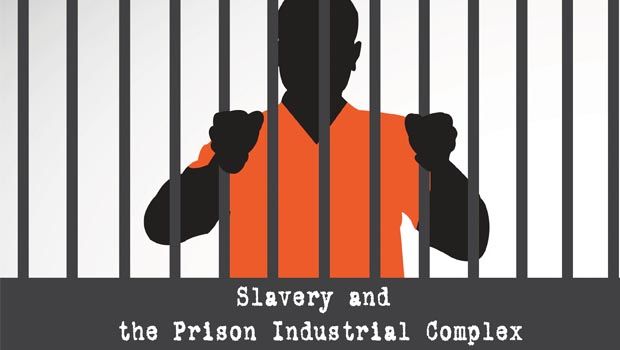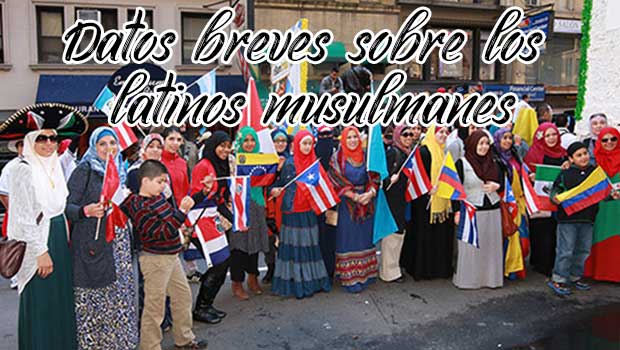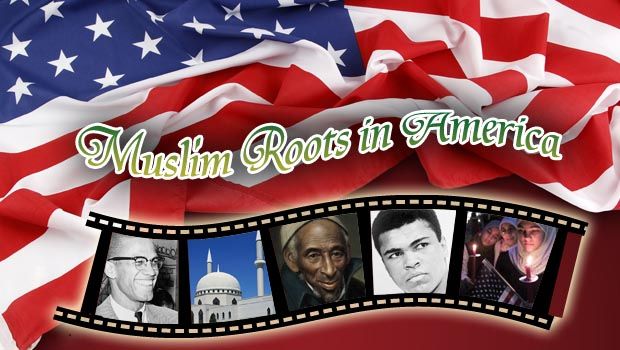Chattel slavery existed in continental North America, including the United States, for over three centuries. Prior to the 1830s, the Society of Friends, commonly known as Quakers, was basically the sole organized, consistent voice clamoring against the evils of slavery in the United States. The Abolitionist Movement agitated and mobilized against slavery from the 1830s until years after Abraham Lincoln issued the Emancipation Proclamation on January 1, 1863, freeing slaves living in states that were in “rebellion against the United States.” It was not until after the Civil War and the ratification by Congress of the 13th Amendment to the US Constitution on December 6, 1865 that slaves were freed in all states and territories of this country, with one categorical exception – prisoners. The 13th Amendment reads: “Neither slavery nor involuntary servitude, except as a punishment for crime whereof the party shall have been duly convicted, shall exist within the United States, or any place subject to their jurisdiction” (emphasis added). While abolishing slavery as a legally protected institution in the nation, the 13th Amendment allows for some form of bondage or involuntary servitude of persons convicted of crimes.
European prisoners, mostly from England, were introduced into the American colonies from the earliest days of settlement. As matters of fact, convict conscription and/or banishment in lieu of the death penalty were primary tools used to populate these early colonies, especially before the Revolutionary War. The largest percentage of convicts, 40,000 or 87 percent, were sent to Maryland and Virginia. Pennsylvania and South Carolina were the third and fourth, respectively, most likely destinations for European prisoners during the colonial era. Most of these early prisoners were debtors who were either unable or unwilling to pay off their legitimate debts. Prisons were among the first public buildings erected by settlers. In Boston, a house of detention was first built in a community of 40 houses. Prisons were initially built and utilized as holding facilities for those awaiting trial, not as long-term centers for punishment. Only political prisoners, prisoners of war, and debtors were imprisoned for lengthy periods. Other forms of punishment were employed in the colonial era rather than extended terms of imprisonment. Punishment models that were imported from Europe such as shaming, public stockades, fines, whippings, and branding were frequently employed. The early state prisons often maintained wretched conditions in which dying from neglect was common.
Penitentiaries in America
The penitentiary is commonly accepted as being of American origin. The expected outcome of being incarcerated was that prisoners would, out of a sense of religious conviction, be penitent, read the Bible, and reflect on the errors of their ways while being isolated from not only society, but from other inmates as well. The Philadelphia Society for Alleviating the Miseries of Public Prisons and Quakers worked to replace mistreatment and corporal punishment of prisoners. They advocated incorporating elements of the English workhouse with a more enlightened treatment of inmates. The Walnut Street Jail, built in 1789 in Philadelphia, was converted into the first penitentiary. In 1799, the Penitentiary Act was put in effect determining that prisons should be built with one inmate per cell and that labor should be continuously carried out in silence. The Walnut Street Jail was the forerunner for future maximum security prisons and solitary confinement units.
Alexis de Tocqueville, a French historian and political thinker, traveled to the United States in 1831 to observe American life and its relationship to institutions. He commented about the early penitentiaries in this country and those advocates who “…thought that absolute separation of the criminals can alone protect them from mutual pollution, and they have adopted the principle of separation in all its rigor. According to this system, the convict, once thrown into his cell, remains there without interruption until the expiration of his punishment. He is separated from the whole; and the penitentiaries, full of malefactors like himself, but every one of them entirely isolated, do not present to him even a society in the prison.” Early penitentiaries were infamous for their harsh rationing of substandard food, insufficient clothing, and woefully inadequate medical care given to the inmates. In a paradoxical twist of history, women and men of African descent were, for the most part, excluded from inclusion in these early facilities since penitentiaries were considered part of a “noble experiment” while Blacks and women were considered either subhuman or otherwise undeserving of this consideration.
From Slave Codes to Black Codes
In the immediate aftermath of the Civil War, the southern states enacted a series of laws known as Black Codes. These restrictions on the actions of newly emancipated slaves were modeled on previously-enforced Slave Codes, but these Black Codes attempted to ensure a supply of inexpensive agricultural labor, restrict the liberties of newly-freed slaves, and maintain the White-dominated social hierarchy. An integral part of the attempt by White southerners to maintain the existing social hierarchy was to establish a system by which they could secure sufficient numbers of manual laborers to continue uninterrupted agricultural production. Consequently, a convict lease system was established for White planters to “lease” prisoners to labor without compensation on plantations, which in some cases were the very same plantation from which a freedman was recently emancipated. Under the system of Black Codes, newly-freed slaves could be forced into convict servitude for actions such as getting drunk, handling money carelessly, vagrancy, breaking curfew, and being wanton in speech or conduct. Southern prisons were now populated by thousands of Black men, not because of actual criminal behavior on their part, but to fill the insatiable thirst of White plantation owners for free labor.
The prison population in the United States remained relatively constant until the Great Depression of 1929 when thousands of men, women, and children suffered incarceration as they attempted to survive, by any means possible, the extreme deprivations of the time. The incarceration rate in 1939 of 137 per 100,000 people was the highest rate in the history of the country. However, the election of Richard Nixon as president in 1968 ushered in an era of mass incarceration due to his ill-advised “War on Drugs” and “law and order” policies. These policies gave birth to mandatory minimum sentencing laws and draconian drug laws championed by then New York governor Nelson Rockefeller. The Nixon Administration’s attitude towards African Americans and protest politics during this era may perhaps best be characterized by H.R. Haldeman, Nixon’s Chief of Staff, when he commented, “[President Nixon] emphasized that you have to face the fact that the whole problem is really the blacks. The key is to devise a system that recognizes this while not appearing to.”
Racist scapegoating by the Nixon Administration and targeted arrests and incarceration of African Americans by the criminal justice system were major contributors to the prison warehousing of African Americans that continues to the present day. During the presidency of Ronald Reagan, incarceration figures in this country passed those of even the Great Depression. Reagan’s economic policy of “trickle down economics” and deregulation resulted in economic stagnation for the masses of Americans and greater numbers being given lengthy sentences for crimes against property. The year 1993 ushered in the dreaded “Three Strikes and You’re Out Law” which started in the state of Washington and spread rapidly across the country. Under these laws, convicted felons would be sentenced to a mandatory life sentence for the commission of a third felony, no matter how non-violent or relatively inconsequential the act may be. One of the most odious aspects of America’s criminal justice system is the disproportionate number of African Americans shoved into the bowels of its penitentiaries.
In Michelle Alexander’s groundbreaking work, “The New Jim Crow: Mass Incarceration in the Age of Color Blindness,” she shockingly reveals, “More African Americans are under correctional control today – in prison or jail or parole – than were enslaved in 1850, a decade before the Civil War began. The mass incarceration of people of color is a big part of the reason that a black child born today is less likely to be raised by both parents than a black child born during slavery.”
The Prison Industrial Complex: Neo-Slavery
The United States has over 2.4 million men, women, and children incarcerated in jails and prisons across the country. While America represents less than five percent of the world’s population, it nevertheless locks away an astounding 25 percent of the total number of prisoners worldwide. America operates the largest penal system on earth. In “Texas Tough: The Rise of America’s Prison Empire,” Robert Perkinson explains, “Imprisonment in the United States has achieved an unprecedented scale. Combining law enforcement, courts, and prisons, the U.S. criminal justice system consumes $212 billion a year and employs 2.4 million people, more than Walmart and McDonald’s combined, the nation’s two largest private employers…Concrete and concertina wire have become integral features of the American landscape.” Although crime rates in this country are below international levels, the incarceration rate in the United States is six to ten times greater than any other industrialized nation. China, a nation with at least five times the population of this country, incarcerates 1.6 million people, a full third less than America’s prison population.
The prison industry in the United States has reached a tipping point level of self-sustaining profitability, resulting in what has been characterized as the Prison Industrial Complex. Former President Dwight Eisenhower, a five-star general and legendary military hero, delivered a chilling commentary in his farewell address on January 17, 1961 in which he warned the nation of a major threat to the country, stating, “In the councils of government, we must guard against the acquisition of unwarranted influence, whether sought or unsought, by the Military Industrial Complex. The potential for the disastrous rise of misplaced power exists and will persist…” President Eisenhower was warning against the symbiotic relationship between government agencies that are charged with managing wars and the corporations that produce weapons and equipment for war.
The Military Industrial Complex was described as an all-too-friendly relationship that may develop between defense contractors and government forces, where “war for profit” results. The Military Industrial Complex developed near sacrosanct status in the American halls of government after World War II, during the period from the 1950s to the early 1990s commonly known as the Cold War. The Cold War was primarily a global struggle between the former Soviet Union and the United States for strategic influence and control of the human and physical resources of the rest of the world. The civilian defense industry reaped financial windfalls from the seemingly endless quest for world domination on the part of the two superpowers. The mantra of the United States during this period was to “Fight Communism” at all costs, even if taxpayer dollars had to be redirected from national social services and education programs to sustain this effort.
When President Reagan launched his “War on Drugs” in the mid-1980s, the U.S. prison population quadrupled in less than two decades, triggering the ascension of the Prison Industrial Complex. The majority of these inmates have been and continue to be African American and Latino. The domestic “War on Drugs” has been a cynical assault on the nation’s poor that disproportionately drives into the Prison Industrial Complex at least seven times the number of African Americans than Whites. In an insightful article by Linda Evans and Eve Goldberg entitled “The Prison Industrial Complex,” the relationship between the Military Industrial Complex and its counterpart is revealed: “As with the building of weapons and armies, the building and maintenance of prisons are big business. Investment houses, construction companies, architects, and support services such as food, medical, transportation, and furniture all stand to profit by prison expansion. A burgeoning specialty item industry sells fencing, handcuffs, drug detectors, protective vests, and other security devices to prisons…As the Cold War winds down and the Crime War heats up, defense industry giants like Westinghouse are re-tooling and lobbying Washington for their share of the domestic law enforcement market. ‘Night Enforcer’ goggles used in the Gulf War, electronic ‘Hot Wire’ fencing, and other equipment once used by the military are now being marketed to the criminal justice system.”
The authors continue, “Communication companies like AT&T, Sprint, and MCI are getting into the act as well, gouging prisoners with exorbitant phone calling rates, often six times the normal long distance charge. Smaller firms like Correctional Communications Corp are dedicated solely to prison phone systems, fully equipped for systematic surveillance…” In a brilliant discourse about the state of America’s prison industry – “Are Prisons Obsolete?” – political activist, scholar, and author Angela Davis asserts, “…corporations associated with the punishment industry reap profits from the system that manages prisoners and acquire a clear stake in the continued growth of prison populations. Put simply, this is the era of the Prison Industrial Complex. The prison has become a black hole into which the detritus of contemporary capitalism is deposited. Mass imprisonment generates profits as it devours social wealth, and thus it tends to reproduce the very conditions that lead people to prison.”
In “Beyond Prisons: A New Paradigm for Our Failed Prison System,” Maganani and Wray observe, “In 1979, the United States government repealed the interstate transport law that had forbidden interstate transport of prisoner-made goods. The Department of Justice implemented a national work program throughout the federal prison system. There, prisoners theoretically work for minimum wage, of which 80 percent is withheld for room, board, survivor compensation, medical fees, and educational costs…Thirty states now allow some type of legalized contracting of prison labor to private firms. Thus, prison labor has become an alternative to moving offshore for many corporations. Workers unemployed because of job flight- and their children- are now working these jobs in prison.” As U.S. corporations continued to maximize profits by outsourcing jobs to countries with much cheaper and mostly unregulated labor forces like Mexico, China, Bangladesh, and India, companies began to realize that a much more exploitable labor pool awaited them by in-sourcing to America’s prisons. Average minimum wages for state prison labor is 93 cents a day.
As state budgetary restraints limited the unfettered expansion of state prisons, privately-owned prisons became the fastest growing sector of the corrections industry. Bastions of American capitalism such as American Express and General Electric are included in the number of investors in private prisons traded on the NASDAQ stock exchange. Correctional Corporation of America is one of the largest owners of private prisons in the world. Virtually free from government oversight, private prisons are notoriously brazen in brutally disciplining inmates for otherwise minor infractions. Private prisons receive a fixed amount of money from the contracting federal, state, or county governments for each inmate in its custody, and with profit as the bottom line, administrators and staff are incentivized to minimize expenditures on the inmates. This is accomplished by providing inadequate and substandard meals and clothing, housing inmates in grossly overcrowded conditions, and allocating insufficient staff supervision. The private prisons’ non-union officers and staff receive minimum pay and training and are, at best, ignorant of the inner city culture of the majority African American and Latino inmates or, at worse, racist.
According to Evans and Goldberg, “Prisons are also a leading rural growth industry. With traditional agriculture being pushed aside by agribusiness, many rural American communities are facing hard times. Economically depressed areas are falling over each other to secure a prison facility of their own. Prisons are seen as a source of jobs – in construction, local vendors, and prison staff – as well as a source of tax revenues.”
Concluding Thoughts
The Prison Industrial Complex in the United States represents a socio-spiritual crisis for persons of faith and good conscience. Not since the institutionalization of chattel slavery has such a large percentage of the population been complicit through tacit acceptance or indifference. Angela Davis rightly observes, “The prison, therefore, functions ideologically as an abstract site into which undesirables are deposited, relieving us of the responsibility of thinking about the real issues afflicting those communities from which prisoners are drawn in such disproportionate numbers. This is the ideological work that the prison performs – it relieves us of the responsibility of seriously engaging with the problems of our society, especially those produced by racism and, increasingly, global capitalism.”
If there is any hope for significant reform or replacement of the current Prison Industrial Complex, the following minimum steps can and must be taken by individuals of conscience who can no longer remain silent about this issue:
Educate yourself and others about the fact that dehumanizing, torturous conditions for persons convicted of crimes are not necessary or desirable and are actually counterproductive for the rehabilitation and redemption of human beings.
Advocate for comprehensive prison reform and greater use of sentencing alternatives to prison, such as restorative justice (a theory of criminal justice that emphasizes the rehabilitation of offenders through repairing harm caused by their criminal behavior, including reconciliation with victims and the community at large) and community service.
Support political action and legislation to eliminate the for-profit prison model. For information, news, and updates, see www.aclu.org/prisoners-rights/private-prisons.
Organize a support network and system for family members of incarcerated individuals that include organizing transportation to visit loved ones and establishing independent social service relief outlets for food, clothing, and emergency financial assistance.
Assist individuals and organizations that act on behalf of the incarcerated.
Adopt a correctional institution within a reasonable distance of your home and assist inmates by providing literature, religious outreach, and social counseling. Understand the actual needs of inmates in that facility and address real needs, and be willing to raise the issues with administration officials.






